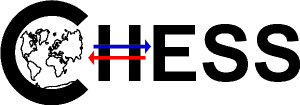When: Week 48/Week 49, December 2022
Where: La Serena and La Laguna, Chile
Credits: 3 ECTS
No. of spots: 12
Lecturers: Benjamin Robson (UiB), Shelley MacDonell (CEAZA), Jostein Bakke (UiB), Gidske Andersen (UiB), Pål Ringkjøb Nielsen (UiB).
Target Group: PhD students with a background in cryospheric sciences, but also students working with topics within the Earth Sciences with an interest in learning more about remote sensing and geomatics.
Course responsible: Benjamin Robson
Application Deadline: 20th June 2022 (application closed)
Course description
This 11 day course will focus on integrating close-range remote sensing techniques (Unmanned Aerial Vehicles; UAVS, Terrestrial LiDAR scanning, tablet-based GIS geomorphological mapping) with Earth Observation Data (satellite data, aerial photography, interferometry datasets) for the study of glacial and periglacial environments. The course will equip students with sufficient skills to collect high-quality geospatial data in the field, and analysis it in tandem with freely available satellite data.
At least four slots on the course are reserved for international PhD students, while the remaining slots are for PhD students part of the Norwegian CHESS (Research school on changing climates in the coupled earth system) school, or for MSc and PhD students at the University of Bergen.
Registration
Registration for the course is here. Note that applicants from a non-Norwegian university need to attach a letter of support from a supervisor to be considered.
Learning outcomes
After completing the course, a student would be:
- Familiar with different close-range remote sensing techniques and understand the strengths, and weaknesses of each method, and how best they can be utilised.
- Able to perform catchment-scale processing of aerial photography, and optical and radar satellite imagery in order to quantify rates of glacial and periglacial change, for example glacial downwasting or rock glacier creep.
- Competent in integrating earth observation datasets with field observations to perform geomorphological mapping using tablet-based GIS.
- Able to understand the spatial and temporal scales of analysis, and how field observations, close-range remote sensing and earth observation data can be integrated to obtain holistic insights into glacial and periglacial processes.
Location
The summer school will be held in two locations. The classroom and computer practical components will be held at the University of La Serena and CEAZA’s premises in La Serena. The data collection and fieldwork will take place in La Laguna catchment with a particular focus on Tapado Glacier.
Figure 1: Location of La Laguna catchment and a close up view of the two most regularly monitored landforms in the catchment. Source: Robson et al, 2022.
Learning modules
Module 1: Community and citizen science snow monitoring projects
Module 2: Catchment scale remote sensing analyses
Module 3: Uncrewed Aerial Vehicles (UAVs) for measuring glacial and periglacial changes
Module 4: Geomorphological mapping and paleoclimate
Module 5: Sub-surface investigations (Jostein)
Approximate timetable of the course
| Day | Activity |
| 0 | Arrive in La Serena. Check into accommodation. Free evening |
| 1 | Introduction. Climate and climate change in the Desert Andes. The cryosphere and its importance for water resources. Introduction to community projects and citizen science in the region. Introduction to different methods for cryospheric monitoring |
| 2 | Remote Sensing practical. Part 1: Time series for snow mapping (Gidske). Part 2: Working out rock glacier and glacier surface elevation changes and velocities (Ben) |
| 3 | Drive to field in morning. Short stops in the Elqui Valley |
| 4 | Fieldwork in La Laguna |
| 5 | Fieldwork in La Laguna |
| 6 | Fieldwork in La Laguna |
| 7 | Fieldwork. Drive back to La Serena in early afternoon |
| 8 | Post-processing of data |
| 9 | Post-processing of data |
| 10 | Post-processing of data. Working on presentation to present to CEAZA |
| 11 | Presentations in the morning. Afternoon free. Group dinner in the evening. |
| 12 | Travel to Santiago for flights back to Norway |
Accommodation, meals, and flights
The accommodation in La Serena will be self-catering for breakfast, with lunches and dinners at cafes or restaurants. Accommodation during fieldwork will be at a basic cabin at La Laguna reservoir with some people having to stay in tents outside the cabin. During fieldwork cooking and cleaning up duties will be divided between all participants. Accommodation after the fieldwork will be in the same accommodation at Laguna del Mar. Depending on flight times to and from Chile, a hotel may be requited in Santiago on one or both trips.
Flights – Flight tickets and carbon offsetting will be covered. Students at a Norwegian institution can apply for a travel advance. Students at a non-Norwegian institution will have their expenses reimbursed following the course.

